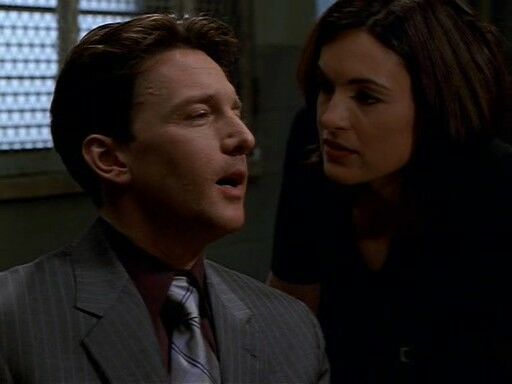Are the cases on “Law & Order: SVU” based on actual events?
Quick Answer: Law & Order: SVU pulls inspiration from real-life events and national news stories but changes the details substantially to create original scripts that deviate from real life. The show’s tagline lets viewers know the tales are based on real things that happened, but also advertises the plots are fictional and do not accurately represent any real story.
Dick Wolf’s Law & Order franchise has long used the evocative tagline “ripped from the headlines.” The phrase is catchy, but also misleads many into believing the stories told in episodes of Law & Order: SVU (1999 - ) are depictions of real-world crimes. This “headlines” theme is reflected in the show’s opening credit sequence, which blends newspaper clipping halftones and high-resolution photos of the cast. In reality, the tagline refers to the franchise’s practice of adopting the general outline of a story from something that occurred in real life, then fabricating the details within. Typically by the end of an episode, only a few details remain similar to the story that provided the case’s inspiration. The circumstances of the event are invented by the series writers.
For example, in the Season Four episode of SVU titled “Perfect,” the body of a kidnapped teenager is found. She had been taken by a cult leader who impregnated young girls and claimed to be able to clone babies. The story was inspired by the abduction of Elizabeth Smart. Smart wasn’t killed like the victim on SVU, but the concept of abduction for the purpose of human baby cloning was drawn from the real cult that took her. The early SVU episode “Slaves” was inspired by the Tanya Kach story. Kach was a Pittsburgh teenager kidnapped by a school employee and forced to live as a sex slave in his basement for nearly a decade. In the episode, a young Russian girl is forced into sex slavery by a white family. In both the real-life and fictional renditions, the victimized girl suffered from Stockholm syndrome as a result of her captivity.

Andrew McCarthy and Mariska Hargitay in “Slaves”
Other episodes come across as more obviously direct depictions of their source material. For instance, in the Season 16 episode “Glasgowman’s Wrath,” a young girl is attacked and two others are missing as they tread into Central Park in search of a creature known as “Glasgowman.” The idea here was inspired by the Slender Man Stabbing in 2014, when two girls lured another girl into the woods and stabbed her 19 times in hopes of appeasing “The Slender Man,” a fictional Photoshopped character submitted to a paranormal image contest on the time-wasting website Something Awful. Also, the poorly-received Season 15 bomb of an episode “Intimidation Game,” which was the series’ take on the Gamergate scandal, didn’t attempt to mask its subject and received strong backlash for the terrible way it represented the story and depicted the gaming culture.

Kelli Giddish in “Glasgowman’s Wrath”
Most of the crimes mirrored on SVU are drawn from fairly current events. Seasons 16 and 17 took bits from the Bill Cosby rape allegations, the Ray Rice case, the Belle Knox controversy, the Elliot Roger case, Black Lives Matter, the Duggar family scandal, the Etan Patz case, and Donald Sterling.
Many episodes are based on more than one real-life crimes or a general pattern of criminal behavior, without referring to any specific incident. The Law & Order wiki has a great chart of every episode of every season of SVU and the real-life cases that provided inspiration.
Each episode of SVU carries a disclaimer at the beginning stating, “The following story is fictional and does not depict any actual person or event.” This indicates the writers’ preference for deviating from the original truth of a true story far enough to create their own fictional rendition, and lets people know they shouldn’t cite what they see on the series as a representation of the real-world details of any particular crime.

